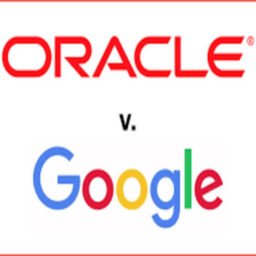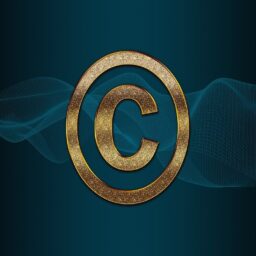INTRODUCTION
Have you ever wondered what the terms “abc©” or “abcTM” mean? If you find yourself asking such questions regularly, you’ve come to the correct place. “Copyright and trademark are two types of intellectual property rights that can be characterized as intangible assets, or creations of the mind, such as inventions, literary and artistic works, designs, symbols, names, and images”[1] used in commercial activity that help to provide its maker rights over the use of her/his creation for a limited time. Intellectual property protection is sometimes overlooked by business owners, but those seeking to register an intellectual property must first understand the differences between the two and then acquire the required registrations to guard it. We’ll explore at the differences between copyright and trademark in India in this blog.
WHAT IS COPYRIGHT?
A copyright is a tool for protecting intellectual property, such as literature, sound recordings, paintings or sculptures, novels or poetry, scripts, and so on[2]. It gives the work’s originator the sole and exclusive right to copy, duplicate, or publish the work for monetary or other purposes. The copyright does not have to be registered. Copyright registration grants the creator of an artistic, theatrical, or musical work exclusive rights to use and distribute their work, preventing others from reproducing or selling the copyrighted work online or offline[3]. A copyright’s duration for an individual owner is the author’s lifetime plus 60 years, while a copyright’s duration for a non-individual owner is 60 years from the date of publication[4]. Copyrighted original works are protected with this mark©. [5]
Since registration is not required, it does serve as proof of originality. If you think you’ll be infringing on someone’s copyright, you’ll need to register. The cost of copyright registration is determined by the type of work. The Copyright Office, Department of Higher Education, and Ministry of Human Resource Development are all responsible for reviewing and accepting Copyright applications. Copyright protection is not available for works that are not fixed in a tangible form of expression[6]., such as a choreographic piece that is not recorded or written in any way, names, ingredient listings, techniques, concepts, ideas, and so on Calendars, height/weight charts taken from public publications or other frequently used sources, and other works that incorporate generally available data but lack original authorship are not protected. Regardless, due to the numerous benefits given, registration is strongly advised. This covers prima facie proof of authorship, a legal requirement designed to produce a public record of the basic circumstances surrounding copyright, and so on.[7] Copyright protection also extends to new works with a condition that the original is preserved in some manner.[8] On the other hand, works that aren’t available in a physical form, such as a speech that hasn’t been documented or taped, aren’t copyrighted. Microsoft Windows, for example, is a copyright-protected operating system that has been registered.
WHAT IS A TRADEMARK?
“A trademark is a symbol, logo, design, word, phrase, colour, sound, or a combination of these elements that is used to trade goods or provide services. It identifies the origin of goods and services while also distinguishing them from those of others. It gives the owner of a trademark exclusive rights to use it in relation to a particular product or service” by Carla Tardi[9]. The applicant must file a trademark application in the prescribed format with the relevant Trademark Registrar to register a trademark. The Controller General of Patents, Designs and Trademarks, Ministry of Commerce and Industry, is responsible for the review and acceptance of trademark applications. Trademarks are commonly used to protect brand names, company names, slogans, and other similar items. McDonalds and Burger King are two examples of fast-food restaurants that have registered their brand name and logo for a trademark[10].
Trademark can be classified into 45 different classes according to the NICE classification for a trademark, commonly known as the International Certification of Goods and Services in which 34 classes fall under the Goods section and 11 fall under the Service section[11]. Each one of the trademark classes represents a separate variety of products and services. To prevent conflicts, a trademark search must be conducted prior to submitting a trademark registration application. It is critical to select the correct trademark class since the incorrect categorization of the mark might obstruct the registration process. Whereas if a business’s activity includes a variety of items or services that fit under multiple trademark categories, trademark applications might be submitted in more than one class A trademark can be owned by both an individual and a company, but it must be renewed every ten years after[12].
Only the owner of a trademark has the right to restrict all third parties from using it without his or her permission. Once a trademark has been registered, the owner uses the sign “®”. This is true when both parties are dealing with comparable or identical goods or services, and there is a risk of confusion. The registration also grants the owner the right to provide third-party permission to use the property in exchange for a fee. In India, trademark protection lasts for ten years and must be renewed every ten years. Six months before the expiration of the trademark’s validity period, an application for renewal can be filed[13]. If you’ve applied for a trademark and it’s still pending, you can use the “™” symbol to represent your brand.[14]
DIFFERENCE BETWEEN COPYRIGHT AND TRADEMARK
- Copyright refers to the creator’s or lawful owner’s intellectual property rights to prohibit others from publishing or duplicating the original work. The Trademark is anything that distinguishes a product or service from its rivals by recognising the brand identity.
- The Copyright Act of 1957 governs copyright in India, whereas the Trademark Act of 1999 governs trademarks.
- A copyrighted work is an artistic or literary production, whereas a trademark is a collection of goods and services.
- Copyright is granted to the rightful owner for a lifetime plus an additional 60 years. A registered trademark is typically granted for a term of ten years, but it may be renewed for an additional ten years by paying the required charges.
- Any original work is protected by copyright. Trademarks, on the other hand, cover anything that is used to identify the product’s brand name. Copyright protects the original work from being used by others. A trademark, on the other hand, shields the public from confusion or bans others from using a similar mark.
- While copyright covers the whole world, a trademark only protects a small portion of it, usually the region where the products are sold.
CONCLUSION
Intellectual Property rights are influenced by almost every business and require protection since they protect a company’s/valuable enterprise’s assets. Copyright and trademarks are a company’s intangible assets used to safeguard intellectual property. They’re registered in the name of the asset’s legitimate owner. The former is used to protect all intellectual property and the creator’s rights, whilst the latter is used to protect the firm’s distinguishing mark, which aids the public in recognizing the name of the company selling the goods. It stops others from utilising a mark that might lead to customer misunderstanding about the goods or service.
Author(s) Name: Arghya Sen (Amity University, Kolkata)
References:
[1] World Intellectual Property Organization. WIPO. (n.d.). Retrieved December 12, 2021, from https://www.wipo.int/portal/en/index.html
[2] The Copyright Act, 1957, S 13
[3] The Copyright Act, 1957, S 14
[4] The Copyright Act, 1957, S 28(A)
[5] Investopedia. (n.d.). Patents, trademarks, and copyrights: The basics. Retrieved December 12, 2021, from https://www.investopedia.com/articles/investing/111014/patents-trademarks-and-copyrights-basics.asp
[6] The Copyright Act, 1957, S 52
[7] Copyright. (n.d.). Retrieved December 12, 2021, from https://www.wipo.int/copyright/en/
[8] The Copyright Act, 1957, S 57
[9] Tardi, C. (2021, September 21). Behind trademarks. Investopedia. Retrieved December 20, 2021, from https://www.investopedia.com/terms/t/trademark.asp
[10] Basics of trademark. United States Patent and Trademark Office – An Agency of the Department of Commerce. (2021, March 31). Retrieved December 12, 2021, from https://www.uspto.gov/trademarks/basics/what-trademark.
[11] Wipo. (n.d.). List of Goods and Services in Class Order. Nice classification. Retrieved December 20, 2021, from https://www.wipo.int/classifications/nice/nclpub/en/fr/
[12] The Trade Marks Act, 1999, S40
[13]The Trade Marks Act, 1999, S25
[14] Investopedia. (n.d.). Patents, trademarks, and copyrights: The basics. Retrieved December 12, 2021, from https://www.investopedia.com/articles/investing/111014/patents-trademarks-and-copyrights-basics.asp










